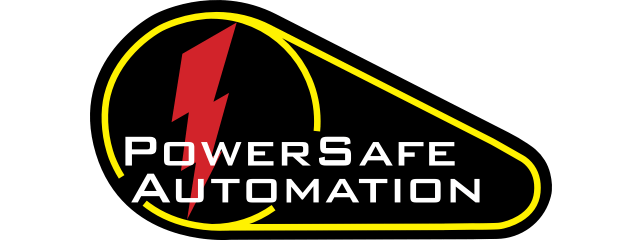Introduction: Safety That Drives Success
In today’s competitive manufacturing world, machine safety isn't just a regulatory checkbox—it’s a strategic pillar of success. Safety Managers who view guarding as an investment, rather than an obligation, are discovering its ripple effects: fewer injuries, less downtime, stronger morale, and higher output.
This guide breaks down why safety guarding is essential not only for compliance but also for long-term operational performance. We'll explore how data-backed strategies lead to measurable ROI—and how you can make them work for your facility.
1. The True Cost of Poor Machine Guarding
The consequences of inadequate guarding extend far beyond injury statistics.
-
Direct costs include medical bills, workers' compensation, and equipment damage.
-
Indirect costs—such as retraining, downtime, lawsuits, and lost reputation—often exceed the direct expenses.
The U.S. Bureau of Labor Statistics reports over 18,000 machine-related injuries annually—many with life-altering outcomes.
A single incident can cost a manufacturer hundreds of thousands of dollars. But when done right, proactive safety improvements yield substantial savings.
2. More Than Compliance: Safety as a Business Strategy
While OSHA 1910 Subpart O and ANSI B11 Series define minimum requirements, industry leaders aim much higher.
Benefits of exceeding compliance:
-
Lower injury rates and insurance premiums
-
Improved uptime and production metrics
-
Greater employee satisfaction and retention
-
Stronger brand reputation with customers and investors
Liberty Mutual research found that for every $1 spent on safety, companies receive a $4–$6 return.
In short, safer facilities are more productive and more profitable.
3. The Link Between Safety and Operational Performance
Companies that excel in safety consistently outperform peers.
Proof in numbers:
-
Dow Jones Sustainability Index leaders show consistent financial outperformance—and safety is a metric.
-
Facilities with robust safety programs report up to 40% fewer downtime incidents.
-
25% increase in Overall Equipment Effectiveness (OEE) was recorded after safety upgrades at a Tier 1 automotive supplier.
It’s time to stop treating safety as overhead—it’s a performance enhancer.
4. 5 Proven Strategies for Machine Safety Success
1. Conduct a Risk Assessment
Use ISO 12100 or ANSI B11.0 frameworks to:
-
Identify hazards (mechanical, electrical, thermal)
-
Assess likelihood and severity
-
Document corrective actions
Tools to use: JHAs, HAZOP studies, risk matrices
2. Upgrade Guarding Technology
Outdated or improvised guards are accidents waiting to happen.
Effective options include:
-
Fixed guards for high-risk zones
-
Interlocked guards with safety switches
-
Light curtains and pressure mats for automation
-
Self-adjusting guards for variable materials
Pro Tip: Choose modular guarding systems to scale with your operations.
3. Automate Safety Responses
Use safety PLCs, interlocks, and connected devices to automate:
-
Emergency stops
-
Guard status alerts
-
Predictive maintenance triggers
Results: Faster reactions, better diagnostics, and less downtime.
4. Engage Your Workforce
Machines don’t keep people safe—trained people do.
Engagement tactics:
-
Host hands-on training and refreshers
-
Use real-world incident examples
-
Reinforce with signage and safety talks
Workers who understand the “why” behind guarding are more likely to comply.
5. Establish an Audit and Feedback Loop
Machine safety isn’t one-and-done. Make it a cycle:
-
Monthly or quarterly audits
-
Equipment performance reviews
-
Team feedback surveys
Use audits to continuously improve and ensure guards stay intact and compliant.
5. The Role of Design in Guarding Efficiency
Guarding should be planned—not patched together.
Designing safety in from the start means:
-
Faster machine access during maintenance
-
Lower risk of bypassing guards
-
Better operator ergonomics
-
Higher compliance rates
Partner with engineers and vendors who offer CAD-supported turnkey guarding systems.
6. Guarding Types and Their Uses
| Guard Type | Function | Best Use Case |
|---|---|---|
| Fixed Guards | Non-removable, blocks access during operation | High-risk blades or conveyors |
| Interlocked Guards | Stops machine when opened | Robotic arms, hydraulic presses |
| Adjustable Guards | Manually set to task requirements | Saws, mills, or drills |
| Self-Adjusting Guards | Auto-move based on material size | Cutting and feeding machines |
| Presence Sensors | Stop machines when motion is detected in danger zones | Automated or collaborative equipment |
7. From Plan to Practice: Real-World Case Study
Company: Midwest Automotive Supplier
Problem: Frequent downtime and high injury rates
Solution:
-
Installed modular interlocked guarding
-
Launched comprehensive safety training
-
Implemented digital guard status monitoring
Results after 18 months:
-
60% drop in reportable incidents
-
25% increase in uptime
-
Full ROI recovery through reduced insurance premiums and lost-time incidents
8. Safety Instrumented Functions (SIF): The Smart Safety Layer
SIFs go beyond traditional safeguards by automating safety at the logic level.
A SIF includes:
-
Sensors to detect risk
-
Logic solver (e.g., safety PLC) to decide action
-
Final element like motor shutoff or valve close
SIFs are critical in high-risk zones and can be designed to meet Safety Integrity Levels (SIL) per IEC 62061 or ISO 13849.
9. Keys to a Successful Machine Safety Program
| Component | Best Practice |
|---|---|
| Risk Assessment | Use ISO/ANSI tools and document all findings |
| Guard Design | Choose scalable, ergonomic, standards-compliant designs |
| Employee Training | Make it interactive and frequent |
| Technology Integration | Use connected devices and software for real-time alerts and analytics |
| Continuous Improvement | Audit, inspect, and adapt your plan based on feedback and incidents |
Safer Machines = Smarter Manufacturing
Machine guarding is no longer just a legal requirement—it’s a competitive advantage. The data is clear: facilities that invest in machine safety achieve higher output, lower costs, and more engaged employees.
As a Safety Manager, you have the opportunity to lead from the front—by championing machine safety not just for compliance, but for business excellence.



